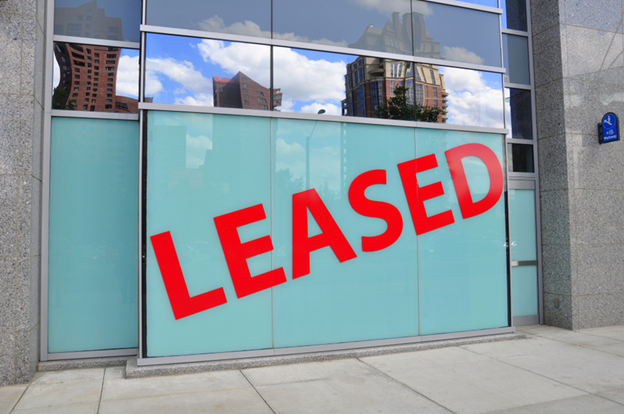Part 1. When Errors Occur
When I consider the collaborative effort necessary to successfully complete a construction project, I often think of the barn raisings of years past. A barn raising was often held in a small farming community where the local residents would come together and build a barn for a neighbor farmer in only one day. This task was accomplished by many experienced hands who had been involved in the construction of a barn several times before. The days of an old-fashioned barn raising have disappeared. It has now been replaced by a mountain of rules, regulations, and other variables provided by building codes which make for a challenging labyrinth a contractor and owner must navigate in order to see a construction project successfully through to completion.
As with any matter that involves interaction with government entities, a contractor and owner must keep certain questions in mind. What are the consequences if a construction project is issued a building permit in error? What rights does a property owner have to complete a project if a problem is discovered at some point before a building project is completed, and when do these rights vest? How does the law of estoppel figure into legal proceedings regarding construction issues, and when does a construction dispute cease to be an administrative issue and become a legal one? These questions will be addressed in our multi-part discussion on building codes.
What Occurs if a Government Entity Issues a Permit in Error?
In the State of Arizona the Phoenix Metropolitan Area alone includes several cities each with their own local rules and procedures adjacent to each other. With close territorial quarters such as these and the large volume of construction, errors in the building permit process are bound to happen. These building permit issuing errors cover a wide spectrum of scenarios. At one end of the spectrum, the error could be a clerical oversight caught by neither the permit’s issuing entity nor the project’s developer, contractor, or architect who submitted the application. Another possibility occurs when a developer, contractor, or architect provides misleading or false information to secure a permit. What can be done when these situations arise? Arizona law has multiple cases on this subject either when the permit is issued because of misleading information or after errors in judgment.
In general terms, when a permit is issued in error because of misleading information provided by an individual, contractor, or architect requesting the permit, Arizona law allows the government entity to stop construction and request the improvement(s) be removed. Truthful and accurate information on a permit application is necessary to avoid the possible future revocation of a secured permit.
This general rule is based on the Arizona Court of Appeals opinion Rivera v. City of Phoenix.[1] In Rivera, the homeowners owned property that was subject to a zoning restriction that limited the total square footage of the residence to 25% of the area of the lot.[2] The homeowners submitted and obtained a permit from the City of Phoenix for an addition to their residence. However, the plans submitted to the City were not accurate in indicating that the square footage of this addition would exceed the 25% rule because the drawings submitted with the permit application did not accurately reflect the lot area covered by the addition.[3]
Believing that the application and plans submitted were in accordance with city planning, zoning regulations, and other local requirements, the City approved the permit. The homeowners quickly began construction of their addition. During the construction, the City inspected the premises and discovered that the addition actually covered 40% of the lot and was an obvious violation of the zoning limitations and building codes.[4] The City notified the homeowners of the violation and delivered a stop work notice. The homeowners requested a zoning variance, which was denied by both the city zoning board and the board of adjustment. The City Council later affirmed the denial of the variance.[5] The homeowners then filed a special action in Maricopa County Superior Court where the trial judge found for the City and ordered the removal of the addition.
The homeowners appealed the Superior Court’s decision and the Court of Appeals upheld the trial court’s finding for the City of Phoenix. The Court of Appeals’ decision emphasized that the original building permit was based upon plans submitted by the homeowners that indicated, erroneously, that the modified residence would not cover more than 25% of the lot. Since this permit application did not reveal the true nature of the addition, the Rivera Court determined that this permit was not legitimately secured and did not give rise to additional legal rights. The opinion emphasized “when a building permit application contains incorrect information which results in the issuance of a building permit allowing construction of a structure in violation of the zoning code, a subsequent revocation of the permit due to the zoning violation is with good cause … so that the revocation does not violate due process.”[6]
What Occurs if a Government Entity Issues a Permit but no Error Occurred?
As described in the Rivera opinion, a government entity does have the ability to revoke a permit under the foundation that it was issued in error. The next question that arises is whether the government’s authority would be extended by the courts in relation to a situation where it is not as obvious that the permit was issued in error. Does permit revocation authority extend to circumstances where correct information was provided by an individual or entity wishing to secure a permit, but an error was committed by a government entity? What if the error is minor? When do the rights of the owner trump the authority of the government entity to issue or correct an error?
A case example of this scenario is found in the Arizona Court of Appeals decision Goodman v. City of Tucson.[7] In this unpublished Court of Appeals opinion, Mr. Goodman applied to the City of Tucson for a reconfiguration of a property that he was planning to develop into individual parcels of land.[8] The City of Tucson authorized the reconfiguration of the property, including the individual development plans for each of the parcels and issued Mr. Goodman building permits for six of the parcels. More than two years later, Mr. Goodman returned to the City with a request to amend the development plans to allow access to several of the parcels through an existing City easement through the property. There was an issue whether Mr. Goodman had fulfilled other obligations required on the property, which eventually led to a deficiency notice and a civil violation.[9] The City of Tucson issued a stop work order on the project because of inconsistencies between the improved individual site plans and the maps submitted pursuant to the City hearing on the recent request for adjustments.[10] Mr. Goodman appealed through the government city zoning department and eventually filed suit. Mr. Goodman had spent a substantial amount of money to improve these properties before his permits (now allegedly issued in error by the City of Tucson) were revoked.
In the Goodman opinion, the Court of Appeals determined there was no dispute that the City of Tucson approved the development plans and issued the building permits to Mr. Goodman and at least some of these permits were still valid at the time the City of Tucson Zoning Administrator ruled that the permits previously issued were in error.[11] The Court of Appeals then examined the actual issuance of these permits, highlighting that Mr. Goodman had originally provided correct information to the City of Tucson at the time his initial requests were approved. In addition, Mr. Goodman had relied significantly upon these approvals, including incurring substantial expenses in order to develop this property and comply with the permits.[12] The Court of Appeals concluded that the “error” discovered by the City of Tucson after the fact, which led to the voiding of these permits cannot preclude Mr. Goodman from going forward and developing the property.[13] The Goodman Court directed that the City of Tucson Board of Adjustment reevaluate its decision denying Mr. Goodman’s requests for issuance of these permits and variances.[14]
As both case examples highlight that most of the issues regarding permitting occur not when one party or another is being purposely deceptive. However, the problems occur when both sides are well-intentioned in their efforts, but facts and circumstances fall through the cracks because of negligence or error in the evaluation process.
As often happens in disputes where the government entity revoked a permit issued in error, the Goodman v. City of Tucson opinion heavily relies on the vested rights doctrine, which will be discussed in detail in a subsequent post.

[1] 186 Ariz. 600, 925 P.2d 741 (Ariz.Ct.App. 1996).
[2] Id. at 601-602.
[3] Id. at 602.
[4] Id.
[5] Id.
[6] Id.
[7] 2007 WL 5613515 (Ariz. Ct. App. 2007).
[8] Id. at *1. Since this is an unpublished opinion it does not create legal precedent and is being used for illustrative purposes only.
[9] Id.
[10] Id. at *2.
[11] Id.
[12] Id. at *3.
[13] Id. at *3-5.
[14] Id. at *6.
© 2015 Matthew W. Harrison and Harrison Law, PLLC All Rights Reserved
This website has been prepared by Harrison Law, PLLC. for informational purposes only and does not, and is not intended to, constitute legal advice. The information is not provided in the course of an attorney-client relationship and is not intended to substitute for legal advice from an attorney licensed in your jurisdiction.






